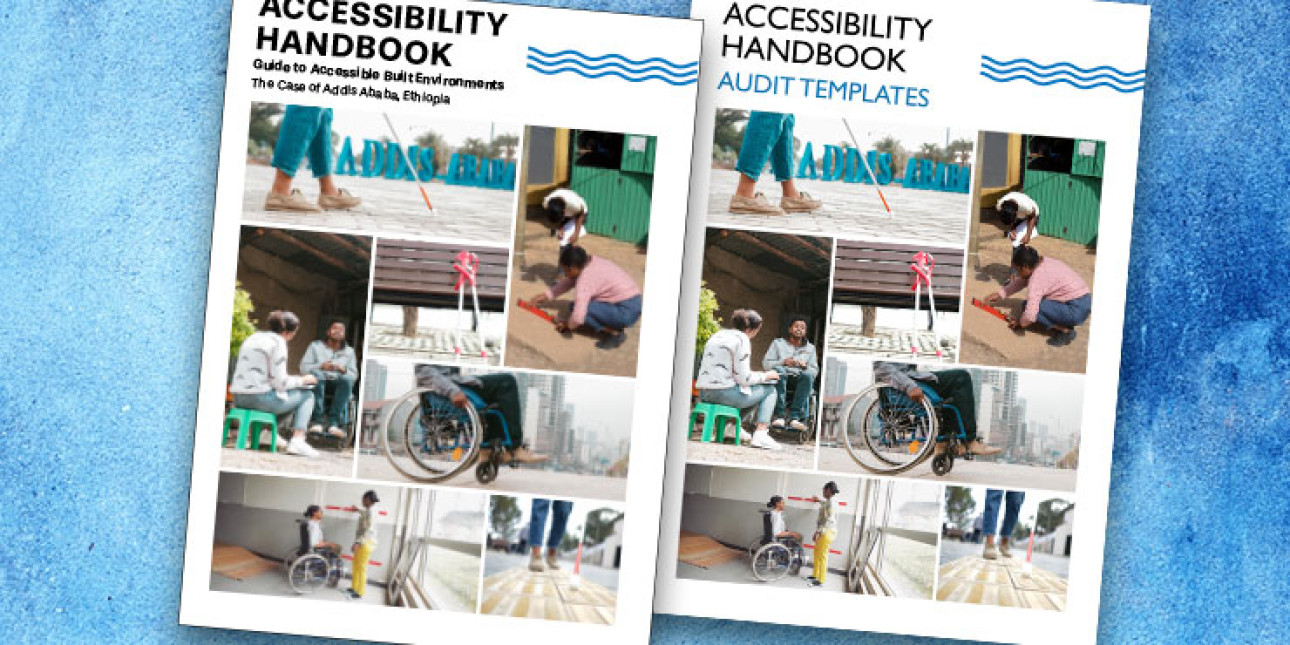

Englanninkielinen esteettömyyskäsikirja julkaistu
Accessibility Handbook -oppaan ovat laatineet arkkitehdit Luiza Sevele Invalidiliitosta ja Mekdelawit Tesfaye DDI:stä. Se sisältää yleistä tietoa vammaisuudesta ja esteettömyydestä, esteettömän suunnittelun standardeja sekä opastusta esteettömyyskartoitusten tekemiseen ja niistä raportoimiseen. Kartoitusten perustana on esteettömyyden asiantuntijoiden kehittämä menetelmä Suomessa. Oppaassa on pyritty valottamaan erityisesti DDI:n kokemuksia esteettömyyden edistämisestä sekä kartoittamisesta Etiopiassa.
Esteettömyyskäsikirjan tarkoitus on toimia työkaluna erityisesti toimijoille Etiopiassa, mutta myös kaikille muille tahoille, jotka edistävät konkreettisesti esteettömien ympäristöjen toteutusta globaalissa etelässä. Invalidiliitto ja DDI toivovatkin, että nyt julkaistu käsikirja hyödyttää suunnittelun ja rakentamisen ammattilaisia, kansalaisjärjestöjä sekä muita esteettömyydestä kiinnostuneita ja sen parissa toimivia tahoja.
Globaalin etelän maissa, kuten Etiopiassa, esteettömyysosaamiselle ja esteettömyyden edistämiselle on valtava tarve. Vaikka monet kehittyvät maat ovatkin allekirjoittaneet ja ratifioineet YK:n vammaissopimuksen ja sen myötä sitoutuneet esteettömyyden edistämiseen ja ymmärtämiseen ihmisoikeutena, työtä on vielä paljon jäljellä tavoitteen saavuttamiseksi.
In English
Accessibility Handbook published
Accessibility Handbook, created in Invalidiliitto (The Finnish Association of People with Physical Disabilities) in cooperation with our Ethiopian partner organization DDI, is now published. It is a product of the joint development of FPD and DDI, targeting to promote accessibility of the built environment and accessibility expertise in Ethiopia.
Accessibility Handbook – Guide to Accessible Built Environments – (only in English) was written by architects Luiza Sevele from FPD and Mekdelawit Tesfaye from DDI. It contains general information on disability and accessibility, standards for accessible design and guidance on how to carry out and report accessibility audit. The accessibility auditing presented in the book is based on an audit method developed by accessibility experts in Finland. In the handbook, an effort has been made to shed light especially on DDI's experiences in promoting and auditing accessibility in Ethiopia.
The handbook is based on the context of Addis Ababa and on DDI’s experiences in promoting and auditing accessibility in Ethiopia. However, it can also be used as an example in other countries in the Global South, both in urban and rural settings. The purpose of the Accessibility Handbook is to serve as a tool for all organizations and professionals that contribute to the implementation of accessible environments in the Global South, for example planning and construction professionals, non-governmental organizations and other parties interested in and working with accessibility.
In countries of the Global South, such as Ethiopia, there is a great need for accessibility expertise and promotion of accessibility. Although many developing countries have signed and ratified the UN Convention on the Rights of Persons with Disabilities and thus are committed to promoting accessibility and understanding it as a human right, there is still a lot of work to be done to achieve this goal.